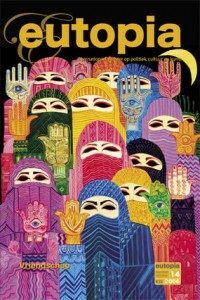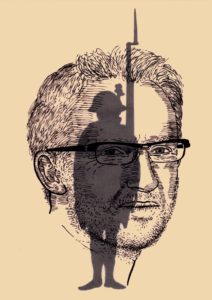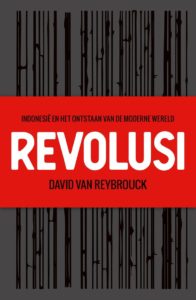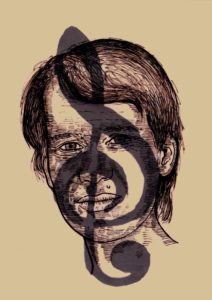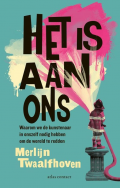
‘’Alfa-Bèta-Cirkel’’, Ontwerp Hans Jakobs, 2020
Inleiding
Met dit essay [1] wil ik een onorthodox voorstel doen tot het vervaardigen van een handboek forensische expertise [2] . Mijn intentie is een echte begrip-verbetering te bewerkstelligen bij alle juridische professionals, bij alle ‘gebruikers van forensische expertise’ in de keten van het strafproces; mijns inziens een tijdloos en zeer nuttig ideaal.
Naar aanleiding van recente zitting-bezoeken aan 24 Nederlandse strafzaken waarin deskundigen een belangrijke rol speelden, is mij – in nagenoeg iedere strafzaak – gebleken dat meer begrip en duidelijker uitleg gewenst is van binnen het Nederlands Forensisch Instituut (NFI) gepraktiseerde natuurwetenschappelijk en technisch laboratoriumonderzoek, dat aan sporen wordt verricht, ten dienste van de waarheidsvinding in het strafrecht.
Dit sporenonderzoek in het kader van het strafproces wordt ook wel criminalistiek genoemd. Criminalistiek is het natuurwetenschappelijk deel van de forensische wetenschappen. Het richt zich op natuurwetenschappelijk onderzoek aan bewijsmateriaal ten behoeve van waarheidsvinding in het strafrecht. En het richt zich op de betekenis van de resultaten van zulk onderzoek voor die waarheidsvinding [3] .
De verklaring van een deskundige ter terechtzitting (art. 339, lid 1 sub 4) en het deskundigenrapport, de ‘schriftelijke bescheiden’ (art. 339, lid 1 sub 5) zijn de twee wettige bewijsmiddelen, die de deskundige regarderen ten aanzien van zijn bijdrage aan het bewijs. Samen met: eigen waarneming van de rechter, verklaringen van de verdachte en verklaringen van een getuige (art. 339, lid 1, sub 1, 2 en 3), zijn dit – limitatief – de vijf wettige bewijsmiddelen, die worden erkend in het Wetboek van Strafvordering.
Ondanks dat er in ons land ook forensische expertise wordt verricht door andere instanties, zoals de Politie, (semi) private instituten, – laboratoria en – personen en universiteiten, wil ik om twee redenen het NFI als mijn uitgangspunt nemen:
1. Anno 2020 wordt het leeuwendeel van gerechtelijke onderzoeken aan sporen in verband met strafbare feiten in Nederland nog immer – op hoog wetenschappelijk niveau – door het NFI verricht; in opdracht van het Openbaar Ministerie tijdens de opsporings- en vervolgingsfase, op verzoek van de rechter-commissaris, de rechter en in voorkomende gevallen ook ten dienste van de verdediging, op verzoek van de advocaat.
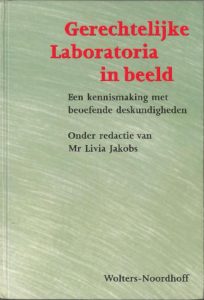
2. Anno 1995 heb ik het voorrecht gehad om een naslagboek [4] te mogen initiëren en redigeren over gepraktiseerde forensische expertise binnen de toen nog ‘’Gerechtelijke Laboratoria’’ genaamde voorgangers van het NFI.
Met betrekking tot de toen door mij onderscheiden 31 diverse deskundigheidsgebieden, is in solide samenwerking met 31 experts, destijds een krachtige kennisbron ontstaan ten dienste van de staande en de zittende magistratuur, wat tevens is aanbevolen als leerboek voor de Politie Academie.
Na 25 jaar acht ik de tijd rijp voor een actuele en gestructureerde herdefiniëring van voorwaarden ter beter begrip van de forensische deskundigheden, in de vorm van een:
Blauwdruk, die de essenties beschrijft van achtergrondkennis, theorie, praktijk en wetenschap, per expertise.
Ter illustratie van de importantie van een systematische samenstelling van een naslag- en leerboek over forensische expertise heb ik de volgende argumenten-vierdeling gemaakt:
A. Waarom: de redengeving, het vinden van redenen,
B. Wat: de inhoudsopgave, het versterken van bètawetenschappen en technieken,
C. Hoe: de methode, het beschrijven van de essentie in de verbindende Blauwdruk,
D. Waartoe: het verbeteren van het begrip van de doelgroepen.
A. Waarom? Het vinden van redenen
Signalen uit de NL stafrechtspraktijk 2014-2019
Vanaf eind 2014-2020 zijn door mij en Ir. Huub Hardy [5] 24 ‘zware’ strafzaken in Nederlandse rechtbanken en gerechtshoven [6] bezocht, geïnventariseerd en nader geanalyseerd. [Bijlage 1, NL Strafzaken bezocht van 2014-2019]
Deze strafzaken zijn geselecteerd op aanwezigheid van – meestal meerdere – deskundigenrapporten en de – zeer regelmatig – lijfelijke aanwezigheid van gerechtelijke deskundigen, die verklaringen aflegden ter terechtzitting.
Mijn aandacht was in deze zaken met name gericht op de communicatie, c.q. de dialogen tussen deskundigen en juristen, persoonlijk ter plaatse gehoord, gezien en genotuleerd. Op deze wijze zijn de juridische behoeften en wensen ten aanzien van de forensische expertise in de praktijk door mij gevonden en gedestilleerd.
In 9 van de 24 strafprocessen [= in bijna 38%] vroegen rechters, officieren van justitie en advocaten letterlijk nadere uitleg aan de deskundigen, puur op taalgebruik gericht, zoals: ‘’geen vakjargon graag, duidelijker bewoordingen, lekentaal graag, wat is de betekenis van, rapport is lastig te lezen, wat bedoelt U precies met, verklaar u nader !’’
In 17 van de 24 strafprocessen [= in bijna 71%] verschenen deskundigen ter terechtzitting. Door rechters, officieren van justitie en advocaten werd bij hen, behalve over de woordkeuze, vaak diepgaand, geïnformeerd naar de betekenis van werkwijzen van onderzoek en vaardigheden, naar de professionele achtergrond en ervaring van de expert.
De, veelal in alfawetenschap opgeleide jurist stelt aan de, meestal in bètawetenschap of techniek opgeleide, forensisch deskundige talloze indringende vragen, zoals:
* wat is de achtergrondwetenschap van deze deskundigheid?
* hoe is de werking van een bepaalde gebruikte expertise / onderzoeksmethoden,
* wat is de werkwijze van de daaraan ten grondslag liggende instrumenten en apparatuur,
* uitleg verschil in onderzoek op bronniveau [7] en onderzoek op activiteitenniveau [8],
* uitleg van contaminatie [9] en uitleg van secundaire overdracht [10],
* uitleg nieuwe – recent ontwikkelde – forensische technieken,
* uitleg van het Bayesiaanse model [11] met gebruik van hypothesen, geformuleerd in de conclusies van de deskundigenrapporten,
* wat is de opleiding, ervaring en achtergrond / C.V. van de deskundige.
Kortom, ik heb persoonlijk een duidelijke behoefte gesignaleerd aan een intensiever inzicht in de praktijk en de theorie van de forensische expertise binnen de rechtszalen. Hieruit is af te leiden dat de klassieke ‘’alfa-bèta-kloof’’ een betere overbrugging vraagt en dat deze fascinerende paradox – anno 2020 – meer begeleiding behoeft, dan thans het geval is.
Sinds 2010 heb ik een zogenaamde Blauwdruk in ontwikkeling, die bedoeld is om het begrip binnen de alfa-bèta-relatie te verbeteren. Deze Blauwdruk biedt een chronologische, systematische uitleg van de basiselementen per deskundigheidsgebied. De uniforme beschrijving van de essenties van de expertise is bedoeld om in nauwe samenwerking met de forensische experts te formuleren.
Op deze wijze kan aan de jurist een gestructureerde uitleg geboden worden van voor hem vaak moeilijk te doorgronden materie, de forensische expertise als bewijs. Wanneer dit belangrijke bewijsmiddel beter beoordeeld, geïnterpreteerd en gewogen kan worden, kan dit meehelpen om de waarheidsvinding naar een hoger niveau [12] te tillen.
Het verbeteren van het begrip van forensische wetenschappen en toegepaste forensische expertises bij de jurist, zal een positieve impact hebben op drie kern-onderdelen van het strafproces;
1. de communicatie, de dialoog tussen jurist en deskundige,
2. de interpretatie van de deskundigenbijdrage als bewijsmiddel door de jurist,
3. de waarheidsvinding.
Signalen uit het ministeriële verbetertraject voor de toekomst van het NFI, anno 2019
De Minister van Justitie en Veiligheid [13] deelt in zijn visie op forensisch onderzoek, zijn toekomstbeeld voor het NFI met de Tweede Kamer.
Enkele aandachtspunten uit deze visie:
1. Een goede informatievoorziening is cruciaal om tot een betere en efficiëntere samenwerking in de keten te komen; verbeteringen in de keteninformatie zijn gewenst.
2. Moderne opsporing vraagt dat het aanbod van forensische expertise aan de voorkant van het proces al beschikbaar komt; het aanbod en de snelheid van forensisch onderzoek moeten worden vergroot.
3. De producten- en dienstencatalogus van het NFI is geen statisch gegeven; een herijking van de ‘’sourcing’’ – wie levert wat? – door NFI, of (semi)private- & politielabs is constant aan de orde.
Resumerend hebben deze drie politieke aanbevelingen allen betrekking op de leverantie van de vele typen van forensisch sporenonderzoek in de strafrechtketen, met het NFI als hoofdadressant.
En dat is nu precies de spil waar mijn plan, het vervaardigen van een forensisch handboek, om draait. Alle ‘’NFI-kennis en wetenschap’’ – wordt volgens eenzelfde structuur – zorgvuldig beschreven en voorafgaand aan de aanvraag van forensische expertise, als essentiële en inzichtelijke informatie ter beschikking gesteld van alle ketenpartners.
Objectief kunnen de NFI-expertises worden gezien als een substantieel onderdeel van de strafrechtketen, als een dienende, wetenschappelijke ondersteuning en support, waarbij een gegronde – op inzicht en begrip gebaseerde – rangschikking en selectie [‘triage’] van toe te passen expertises – snel en spelenderwijs – door de ketenpartners vooraf moet kunnen worden gemaakt. Samen met de hierboven gevonden persoonlijke en politieke signalen vormt deze objectieve omstandigheid voldoende redengeving tot de zekere zinvolheid van het systematisch samenstellen van een Handboek Forensische Expertise.
B. Wat ? De inhoudsopgave; het versterken van bètawetenschappen
Het bedoelde forensische naslagwerk bevat de volgende inhoud:
1. Alle binnen het Nederlands Forensisch Instituut beoefende gerechtelijke expertisegebieden [14] van forensische antropologie tot en met wildlife forensics [Bijlage 2, Forensisch onderzoek NFI] vormen het uitgangspunt van het te vervaardigen handboek.
De NFI laboratoriumonderzoeken – gebaseerd op een diversiteit van bèta- en technische wetenschappen, zoals biologie, chemie, geneeskunde, wis- en natuurkunde – worden (in samenwerking met de experts) zo compleet, systematisch en transparant mogelijk beschreven, om essentieel te zijn.
Alle NFI – veelal bèta – expertise, kennis en wetenschap wordt in essentie beschreven en komt – aldus versterkt – ten dienste van alle juristen – veelal alfa-gebruikers. Waarbij de constante, dynamische factor is dat standaarden en normen meegroeien met de ontwikkeling van de vakterreinen [15] .
2. Vermelding verdienen ook – per deskundigheidsgebied – de forensische expertises, die door Politie, (semi) private instituten en private personen worden verricht.
3. De verschillende Universiteiten in ons land waar gedegen onpartijdig forensisch onderzoek wordt verricht, moeten worden genoemd. Bijvoorbeeld The Maastricht Forensic Institute [TMFI], en het Forensisch Laboratorium voor DNA- Onderzoek [FLDO] [16] . Deze spelen allen een belangrijke rol binnen de ontwikkeling van de forensische wetenschappen (en zijn als zodanig ook onmisbaar voor de verdediging) voor een gelijkwaardige ‘second-opinion’ c.q. contra-expertise [‘’fair trial’’, ‘’equality of arms’’] [17] .
4) Nieuw ontwikkelde forensische technieken: recent ontgonnen en vaak nog in ontwikkeling zijnde wetenschappelijke technieken met veelbelovende forensische toepassingen, zijn belangrijk om te noemen. Velen werden gepresenteerd van 2014- 2020 aan de Universiteit van Amsterdam [18]
[Bijlage 3, Nieuwe forensische technieken].
Een zeer recent voorbeeld hiervan is het drastisch terugbrengen van de marge rond het tijdstip van overlijden, de Post Mortem Interval; de PMI [19] . De vaststelling van de PMI is thans mogelijk bij een misdrijf tot gemiddeld drie kwartier; tot nu toe was dat een paar uur.
De nieuwe methode, die de kring van verdachten rond een misdrijf aanzienlijk kan verkleinen, is ontwikkeld door onderzoekers van het Amsterdam UMC, de Universiteit van Amsterdam en het Nederlands Forensisch Instituut.
De nieuwe PMI-methode werkt met een thermische camera of een sensor, die op het lichaam wordt geplakt. Ook wordt rekening gehouden met meer factoren, zoals of het lichaam gekleed is achtergelaten, of in het water ligt [deze nieuwe PMI-techniek is te vermelden bij forensische pathologie].
5) Juridische achtergrondinformatie; per deskundigheidsgebied wordt ook een duidelijk beeld gegeven van de juridische context waarin de forensische expertise zich afspeelt, ten behoeve van de forensische expert. De forensische expertise wordt geplaatst binnen een kader van wetgeving, jurisprudentie en vakliteratuur en – tijdschriften. Zo mogelijk wordt een link met Tekst & Commentaar van het Wetboek van Strafvordering gerealiseerd. Tevens wordt een uitgewerkte juridische modelcasus per deskundigheidsgebied beschreven.
Op deze manier zal het hele scala van specialistische skills een intensieve inventarisatie vormen van de beschikbare forensische expertise in Nederland, wat tevens de inhoudsopgave zal vormen van het te vervaardigen online-forensische handboek.
C. Hoe? De methode; de verbindende Blauwdruk
De bestaande ‘NFI-vak bijlagen’ zijn thans zeer divers en beschreven in een niet-homogene stijl. Zij verschillen onderling qua beschrijvingsvolgorde, indeling, foto’s, grafieken, tekeningen, lengte, naamgeving en opzet.
In 2010 is door mij een begin gemaakt met de ontwikkeling van een zogenaamde Blauwdruk: een in 12 onderdelen opgebouwde forensische ’informatieve infrastructuur’. Een volgens een vaststaande structuur opgebouwde beschrijving van achtergrondkennis en – wetenschap, theorie en praktijk per deskundigheidsgebied.
Samen met twee in 2010 praktiserende gerechtelijk deskundigen heb ik twee – Engelstalige – Concept-Blauwdrukken [20] gemaakt over:
1) Forensische Antropologie, in samenwerking met Prof. George Maat [LUMC / NFI],
2) Gerechtelijke Handschriftvergelijking, in samenwerking met Drs. Wil Fagel [NFI].
Van 2014-2019 heb ik door het noteren van de vele behoeften aan de juristen-vraagzijde tijdens 24 bezochte strafzittingen, gedetailleerde kennis van leemten en noden opgedaan.
Door deze diversiteit van juridische praktijkbehoeften heb ik in 2020 de bestaande Blauwdruk verder kunnen uitbouwen en, met medeneming van de juristen-wensen, 9 items kunnen toevoegen tot vooralsnog 21 onderdelen.
De Blauwdruk anno 2020 biedt een transparante en eenvormige structuur, een eenvoudige chronologische opzet, een gedifferentieerd overzicht met een wetenschappelijk inzicht in alle praktische, theoretische en juridische aspecten, per terrein van expertise. Zo zal het vervaardigen, c.q. invullen van de gegevens geschieden, in gezamenlijke coordinatie en hechte samenwerking met de NFI-deskundigen, en vormt de Blauwdruk de constructieve kern van dit Essay.
In de Blauwdruk wordt een praktijkinzicht gegeven in de forensische experts-aanbodzijde van zowel de mogelijkheden als de beperkingen van de NFI-expertises.
Door middel van een continue geactualiseerde beschrijving van de achtergronden en grenzen per expertise, door een intensief inzicht in gebruikte apparatuur en instrumenten, uitleg van onderzoekanalyses en -methoden, de conclusievorming [21] .
Alsmede door inzicht in en kennis van deskundige en juridische vakliteratuur, wettelijke grondslagen en aanwezige jurisprudentie, ontstaat een zo exact mogelijke informatie- en kennisbron van essenties per forensische expertise.
Aldus wordt praktisch tegemoet gekomen aan de ‘gedetailleerde kennis van zowel de diversiteit van de vraagzijde, als de mogelijkheden en beperkingen aan de (forensische) aanbodzijde’ [22] , die noodzakelijk worden geacht in de ‘discussie over het beter afstemmen van vraag en aanbod van forensisch onderzoek’.
Het tot stand brengen van een optimale brugverbinding tussen de bèta-aanbieders van de forensische expertise [NFI] en de juridische alfa-gebruikers daarvan in de strafrechtsketen, is de bedoeling van de Blauwdruk.
In de bestaande Blauwdruk dienen de actuele NFI-behoeften, -voorstellen en -wensen te worden ingepast, zodat de uiteindelijke inhoud een zo volledig en zo helder mogelijke bron zal zijn tot kennis- en informatiedeling.
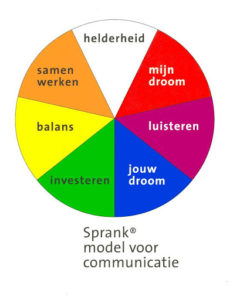
Het Sprankmodel voor communicatie [23]
Met de continue voortschrijding van wetenschap, techniek en inzichten dreigt een papieren boekversie al snel gedateerd te worden. Een online-versie van een Blauwdrukken-bundeling van de verschillende gepraktiseerde forensische expertises binnen het NFI zou in dit kader de oplossing kunnen zijn. De toekomst van iedere Blauwdruk zal een dynamisch proces zijn, waarin regelmatig forensische toepassingen zullen worden geschrapt, vervangen en toegevoegd. Een uniforme uitleg van de essenties van de verschillende expertises wordt zo gerealiseerd, onder het motto ‘’eenheid in verscheidenheid’’.
De bekende Nederlandse forensische patholoog-anatoom Dr. J. Zeldenrust wees in de 20ste eeuw al op het belang van het feit ‘’dat een arts als deskundige de Nederlandse taal zodanig beheerst dat de medische leek kan begrijpen wat hij heeft bedoeld te zeggen’’ [24] . Wat voor de gerechtelijke geneeskundige geldt, geldt in even sterke mate voor alle forensische deskundigen.
In lekentaal geformuleerd en op academisch niveau beschreven is de Blauwdruk bedoeld voor juristen en eenieder die professioneel met forensische expertise in aanraking komt, om per NFI-deskundigheidsgebied zodanige helderheid te verkrijgen dat de ‘’moeilijke materie’’ optimaal kan worden begrepen.
(Bijlage 4, Blauwdruk per deskundigsheidgebied )
D. Waartoe? Het verbeteren van het begrip van de doelgroepen
De bundeling van alle verschillende ingevulde Blauwdrukken samen, vormt een forensisch handboek, wat een uniform inzicht biedt in alle gepraktiseerde forensische expertise in NL.
Dit schept een heldere en gelijkwaardige communicatiemogelijkheid voor de verschillende ketenpartners. Een Handboek Forensische Expertise kan als strategisch instrument functioneren om de verbinding tussen de ketenpartners te optimaliseren.
Zo kan in de toekomst ook de verbinding tussen de juristen onderling verbeteren. Door een mogelijkheid tot beter begrip van de forensische expertise te creëren, wordt een heldere, kritische dialoog en interpretatie door de juristen onderling mogelijk. Toekomstige onderzoeksopdrachten en -wensen gericht aan het NFI [25] , zoals in het nieuwe Wetboek van Strafvordering voorgesteld, zal de officier van justitie moeten delen met de verdediging.
Meer begrip – vooraf — van forensische expertise zal in een scherpere gezamenlijke formulering van de onderzoeksopdracht aan het NFI resulteren.
Het bestaan van een actuele ‘’state-of-the-art’’ inzake forensics, kan zo mogelijk ook dienen ter oplossing van ’cold cases’ [26] [27] [28] en eventueel zelfs ter voorkoming van gerechtelijke dwalingen [29] .
Een andere categorie van belanghebbenden bij een forensisch handboek zijn de NFI-deskundigen zelf. De forensische experts dienen goed op de hoogte te zijn van zowel de expertises van hun collega’s – mede i.v.m. interdisciplinair forensisch onderzoek, IDFO [30] , alsmede van de juridische context van de forensische expertise in het strafproces, ten dienste waarvan zij hun onderzoeken verrichten.
Een forensisch handboek, geeft inzicht in het geheel van het multidisciplinaire forensische onderzoek; van Plaats Delict tot en met einduitspraak in vonnis of arrest. Waarbij tegemoet wordt gekomen aan de eis van de Raad van de Rechtspraak dat ‘Het kennisniveau van rechters van de deskundigheidsgebieden zodanig moet zijn, dat de inbreng van de deskundigen voldoende kritisch kan worden benaderd. Hiervoor is nodig dat alle rechters en juridisch medewerkers een basiskennis hebben van de belangrijkste methoden van onderzoek.’ [31]
Een Handboek Forensische Expertise kan in Nederlands- en Engelstalige versie dienen als :
1. een forensisch naslagwerk voor alle juristen in het strafproces [32] ; rechters, officieren van justitie en advocaten,
2. een forensisch naslagwerk voor de NFI-deskundigen, een collegiaal NFI-inzicht,
3. een naslag- en praktijkboek voor de forensisch-technische politie / recherche [33] ,
4. een leerboek voor de student aan de Politie Academie,
5. een leerboek voor Criminalistiek- en Criminologie-studenten aan Hogescholen, Universiteiten en Post Academisch Onderwijs [PAO],
6. een leer- en naslagwerk t.b.v. de juristen bij het ICC [34] ,
7. een complementaire dienstverlening van en voor het NRGD [35] .
Het NRGD in Utrecht geeft voor forensische experts de mogelijkheid tot normering en regulering in de door hen gepraktiseerde expertise. Daarmee biedt het NRGD een mogelijkheid tot certificering en toelating op de NRGD-Lijst; een notering die de individuele deskundige een kwaliteit ten behoeve van het strafrecht verleent.
De beschrijving van de door het NRGD reeds geaccrediteerde 10 deskundigheidsgebieden kan gebruikt worden voor (gedeeltelijke) invulling van de betreffende Blauwdrukken. Tevens kunnen de toekomstige Blauwdrukken mede ten dienste staan van het NRGD. Een voor de hand liggende Nederlandse kruisbestuiving met een win-win-effect voor het NFI & het NRGD, ten behoeve van de duidelijkheid en de eenvormigheid van de ‘nationale forensica’.
In dit kader is enigszins vergelijkbaar met het NRGD, de sinds 2008 in Birmingham, Engeland bestaande Forensic Science Regulator [36] ; een gouvernementele organisatie, die – door middel van ‘’Codes of Practice and Conduct’’ forensische experts voorziet van hoge, uniforme standaarden voor de kwaliteit van persoonlijk gedrag en professionele werkwijzen in organisaties. Ten behoeve van de degelijkheid, effectiviteit en transparantie van hun rapportages in het strafproces.
De Forensic Science Regulator heeft gelijkvormigheid van een op de persoon en op het forensische onderzoeksproces gerichte insteek als doel, binnen de wereld van de forensische expertise, in Engeland. Het NRGD streeft deze doelstelling eveneens na, door de eenvormige persoonlijke deskundigen-certificeringen per expertise gebied in Nederland mogelijk te maken. Terwijl de voorgestelde Blauwdruk een uniforme manier van beschrijving van de essenties per expertise-gebied tracht te bereiken.
Samen vormen bovenstaande ‘gelijkvormigheden’ een in 2000 door mij beschreven doelstelling van ‘dubbele transparantie’ in de [Europese] forensische expertise:
1. transparantie van beschikbare gekwalificeerde experts en
2. transparantie van beschikbare forensische onderzoeksmethoden .
Met de uitvoering van de Blauwdrukken-bundeling, komt een eenvormige transparantie van de expertise-essenties tot stand, waardoor beter begrip en betere interpretatie van de forensische rapporten door de strafrechtjuristen mogelijk kan worden gemaakt. [37]
Conclusie
Met het vervaardigen van een helder overzichtsboek betreffende de NFI forensische expertise kan aan de als weinig klantvriendelijk te boek staande houding van het NFI [38] een positieve impuls worden gegeven.
Met het verstrijken van de tijd is er steeds meer vakinformatie beschikbaar gekomen.
Zo zal het vooral een kwestie van ordening en structurering zijn, van de al in ruime mate aanwezige NFI-informatie per deskundigheidsgebied, om deze – samen met de betreffende NFI-deskundigen – in de definitieve Blauwdruk-uni-vorm te gieten.

“Alfa-Bèta-Cirkel’’, Ontwerp Hans Jakobs, 2020
Aldus ontstaat er een actuele, consistente informatie- en kennisbron, waarin het NFI-expertise-aanbod precies beschreven staat en waarbij de oriëntatie duidelijk op de buitenwereld gericht is, in het bijzonder op de strafrechtsketen [39] .
Hiermee wordt aan de ‘noodzaak van een verklarend mechanisme en kennis van zaken’ [40] – ten aanzien van de zo vaak door juristen in het strafproces geraadpleegde NFI expertiseterreinen – systematisch tegemoet gekomen.
Tegelijkertijd wordt een belangrijke bijdrage geleverd aan het doel van de Wet Deskundige in Strafzaken (2010): het verbeteren van de communicatie [41] tussen de deskundige en de rechtspraak.
Een bijkomend positief aspect is, dat ook het inzicht in de Criminalistiek zal toenemen.
Alle essentialia van forensische expertise worden in de diverse Blauwdrukken logisch en systematisch beschreven. Dit kan zeer geschikt zijn als een educatief, inzichtelijk hulpmiddel waardoor de toekomst van het universitaire studievak Criminalistiek – mede – kan worden veilig gesteld.
Een NFI leer- en naslagboek, samengesteld door het bundelen van alle ingevulde Blauwdrukken, essenties per gepraktiseerd deskundigheidsgebied, vormt een optelsom van eenvoudige ideeën [42] . Waarbij het eindresultaat leidt tot een uniform gestructureerd Handboek Forensische Expertise; de realisatie van een tijdloos en nuttig ideaal.
Aanbevolen Achtergrond Literatuur
– Aben, Diederik en Meulenbroek, Lex, Een hooiberg vol spelden, Het gebruik van genealogische DNA-databanken bij opsporing en identificatie, Uitgeverij Paris, december 2019
– Broeders Ton, Ontwikkelingen in de Criminalistiek, Van vingerspoor tot DNA-profiel – van zekerheid naar waarschijnlijkheid, Rede bij de aanvaarding van het ambt van bijzonder hoogleraar Criminalistiek, Unversiteit Leiden, 19 november 2004
– Eco, Umberto, De betovering van lijsten, Uitgeverij Bert Bakker, 2009
– Fresco, Louise, Kruisbestuiving, Prometheus, Bert Bakker, Amsterdam, 2014
– Groeneveld Robert, Speurkunst en wetenschap, Instrumenten voor de knappe strafrechter, Afscheidsrede als hoogleraar Criminalistiek, Universiteit Leiden, 7 december 1999
– de Keijser, J.W., Elffers, H., Kok, R.M., Sjerps,M.J., Bijkans begrepen? Boom Juridische Uitgevers, Den Haag, 2009
– van Koppen, Peter J. , De Schiedammer Parkmoord, Ars Aequi Libri, 2003
– van Koppen, Peter J. , Overtuigend bewijs, Nieuw Amsterdam Uitgevers, 2011
– Bernard – Robertson / G.A. Vignaux / Charles Berger, Interpreting Evidence, Evaluating Forensic Science in the Courtroom, Second Edition, John Wiley & Sons Ltd, Oxford, UK, 2016
– de Spinoza, Baruch / Benedict, Ethica ( 1663 – 1675), Uitgeverij Bert Bakker, Amsterdam, 2004
– Thorwald, Jurgen, Das Jahrhundert der Detektive, Droemer Knaur, Zurich, 1973
– Uges, Donald, Perfect als moordenaar of als toxicoloog, Een zaak van doseren of doceren, Rede bij de aanvaarding van het ambt als hoogleraar in de klinische en forensische toxicologie, Rijks Universiteit Groningen, 2 juni 1998
– van de Voorde, Wim, Handboek Forensische Geneeskunde, Die Keure, Brugge, België, 2010
– Yasar Iscan, Mehmet & Steyn, Maryna, The Human Skeleton in Forensic Medicine, Third Edition, Thomas Publisher Ltd, Illinois, 2013
Door middel van het vinden van alfabehoeften bij de strafrechtjuristen, kunnen bètawetenschappen versterken, door het beschrijven van de forensische essenties in de verbindende Blauwdruk, wordt bij de doelgroepen het begrip verbeterd en het strafproces verlicht.
Voorschoten, 12 november 2020
Noten:
[1] Een essay is een beschouwende prozatekst, waarin een persoonlijke visie wordt gegeven op een hedendaags onderwerp. Het is afgeleid van het Franse ’essai’; probeersel of proeve. De schepper van dit literaire genre is Michel de Montaigne, die in 1580 de 1e uitgave in twee delen van zijn ‘Essais’ publiceerde.
[2] Forensische expertise: expertise = deskundigenonderzoek, ten dienste van het ‘’forum’’ = het gerecht in het oude Rome.
[3] Prof. Dr. Ir. Charles Berger, De waarheidsvinding naar een hoger niveau, Oratie uitgesproken door Charles Berger bij de aanvaarding van de hernieuwde benoeming tot bijzonder hoogleraar in de Criminalistiek aan de Universiteit Leiden vanwege de Stichting Criminalistiek op vrijdag 3 februari 2017, p.3.
[4] Gerechtelijke laboratoria in beeld, Een kennismaking met beoefende deskundigheden, Redactie Mr. Livia Jakobs, Groningen, Wolters Noordhoff, 1995.
Bijzondere bijkomstigheid is dat dit boek op 10 mei 1995, tijdens het Symposium ”Gerechtelijke Laboratoria in beeld”, ter gelegenheid van het 50-jarig bestaan, destijds is aangeboden aan de Minister van Justitie, Mevr. Mr. W. Sorgdrager, zie noot 39.
[5] Ir. H. J .J. Hardy, destijds coördinator Research & Development NFI en docent Forensic Science, Universiteit van Amsterdam
[6] Met dank aan de attente bemiddeling van Forensisch Medewerkers: Anique Henderson MSC [Rb.Utrecht, Rb. Arnhem], Michelle Claushuis MSC [Hof Amsterdam, Hof Leeuwarden] en Wanda Remijn MSC [Rb. Lelystad, Rb. Rotterdam]
[7] Onderzoek op bronniveau: wat is de oorsprong, c.q. de bron van het spoor?
[8] Onderzoek op activiteitenniveau: bij welke activiteit is het spoor ontstaan?
[9] Contaminatie: betreft iedere substantie die onopgemerkt in of aan een bewijsstuk wordt toegevoegd, nadat een verantwoordelijke partij dit heeft veilig gesteld [Keith Inman, M. Crim., Norah Rudin, Ph.D., Principles and Practice of Criminalistics, The profession of Forensic Science, CRC Press, London, 2001, p.211]
[10] Secundaire overdracht: vindt plaats wanneer een fragment wordt overgebracht van bron A op doel B en vervolgens van doel B naar doel C. Het ontdekken van dit fragment van bron A op doel C leidt tot de aanname dat er contact was tussen A en C, terwijl er in feite zo’n contact niet heeft plaatsgevonden. [Keith Inman, M. Crim., Norah Rudin Ph.D., Principles and Practice of Criminalistics, The Profession of Forensic Science, CRC Press, London, 2001, p.96]
[11] Thomas Bayes (1702-1761) Engels statisticus/filosoof. Het Theorema van Bayes in de vorm van kans-verhoudingen, Odds, (waar de hypotheses een onderdeel van zijn) luidt: Posterior Odds = Prior Odds X likelihood ratio.
Met andere woorden: de deskundige bepaalt op basis van zijn onderzoek de diagnostieke waarde van zijn waarneming = de likelihood ratio = LR = de bewijskracht. De nieuwe kansverhouding [Posterior Odds] volgt uit = de ‘’oude’’ kansverhouding [Prior Odds] vermenigvuldigd met de bewijskracht.[LR].
[12] Prof. Dr. Ir. Charles Berger, De waarheidsvinding naar een hoger niveau, Oratie tot bijzonder hoogleraar Criminalistiek aan de Universiteit Leiden, 3 februari 2017
[13] Mr. Ferdinand Grapperhaus in zijn Brief aan de Tweede Kamer, d.d.1 juli 2019 https://zoek.officielebekendmakingen.nl/kst-33628-63.pdf
[14] Zie www.nfi.nl
[15] Prof. Dr. Mr. Hans [ J.F.] Nijboer, Forensische Expertise, 4e druk, Gouda Quint Deventer, 2009, p.36
[16] Sinds 1994 onder leiding van Prof. Dr. P. de Knijff, professor of population and evolutionary genetics at the department of human genetics of the Leiden Unversity Medical Centre, LUMC.
[17] Artikel 6, Europese Verdrag voor de Rechten van de Mens, EVRM, Verdrag van Rome, 1950; het ’equality of arms’/ ‘fair trial’-artikel.
[18] Lecture Series Frontiers of Forensic Science, University of Amsterdam, en Forensic Symposia of the Co Van Ledden Hulsebosch Center [CLHC], Amsterdam Center for Forensic Science and Medicine, beiden o.l.v. Prof. Dr. Maurice Aalders en Prof. Dr. Arian van Asten; met dank aan beide heren voor de gastvrijheid vanaf 2014 tot heden aan de UvA genoten, veelal in het ‘Science Park’. https://www.clhc.nl/shared-content/news/news/2020/09/1st-ffs-session-in-new-academic-year-2020-221.html?origin=Bz1gpBgwThqTdnLkMlFl%2FQ
[19] Prof. Dr. Maurice Aalders et al., Reconstructing the time since death using noninvasive thermometry and numerical analysis, Science Advances, American Association for the Advancement of Sciences, Washington DC, 29 May 2020 . https://advances.sciencemag.org/content/6/22/eaba4243.full
[20] Beide Conceptblauwdrukken zijn bij de auteur ter inzage.
[21] Lees ook NFI Digitale magazine,6, 31, 2019; commentaar Mr. Paul Acda op leesbaarheid NFI-rapporten.
[22] Prof. Dr. Amade A. M’charek, Tweede Driejaarlijkse Signalering Forensisch Onderzoek, uitgevoerd in opdracht van het Ministerie van Justitie en Veiligheid, 24 juni 2019, p.23 https://zoek.officielebekendmakingen.nl/blg-892793
[23] Het Sprankmodel is ontwikkeld door Katri Schweitzer en Roeland Schweitzer, Schworks, 2002
[24] Dr. J. Zeldenrust, Moord ontleed, Inleiding J. Zeldenrust, Stubeg, 1988.
[25] Trouw, de Verdieping, p.1,2 en 3, 12 november 2020, beschrijft de toekomstplannen tot herziening van het huidige Wetboek van Strafvordering [1926]. Onder leiding van Rector Magnificus, Universiteit Maastricht, Rianne Letschert in samenspraak met Minister van Justitie en Veiligheid, Ferd Grapperhaus. Er wordt – onder meer – gestreefd naar meer aandacht voor de verdachte, zodanig dat ‘’de officier van justitie sneller de onderzoeksopdrachten, bijvoorbeeld aan het NFI om bepaalde sporen nader te analyseren, moet delen met de verdediging. Die kan dan meedenken en eventueel suggesties doen om die opdracht aan te passen’’.
[26] Prof. Peter J. van Koppen, Leider van het Project ‘’Gerede Twijfel’’; onderzoek naar twijfelachtige strafzaken, van moordzaken-dossiers door studenten van de Vrije Universiteit te Amsterdam.
[27] Lex Meulenbroek en Diederik Aben, Een hooiberg vol spelden, Het gebruik van genealogische DNA-databanken bij opsporing en identificatie, Uitgeverij Paris, december 2019 [in afwachting van wettelijke
regulering in Nederland].
[28] Carina van Leeuwen, forensische – cold case – rechercheur, Politie Amsterdam; hoopt in de toekomst ‘’cold cases’’ op te kunnen lossen door het gebruik van publieke DNA-databanken.
[29] Prof.Dr. Gert-Jan Knoops, Plenary Lecture November 13, 2017, Leiden University, “The Knoops Innocence Project’’ as Dutch part of International Innocence Network of the Cardozo School of Law, New York, 2012.
[30] Drs. J. A. de Koeijer, Deskundige Interdisciplinair Forensisch Onderzoek [IDFO], NFI.
[31] Mr. Dr. R.A. Hoving, Deskundigenbewijs in het stafrecht, Proefschrift, Rijks Universiteit Groningen, 1 juni 2017, paragraaf…p.67 https://www.rug.nl/research/portal/files/42081819/Complete_thesis.pdf
[32] Mr. H.W.J. de Groot, ex-raadsheer Hof Amsterdam, Uit de Praktijk. Een overval tijdens een drugsdeal en een inbraak: tweemaal recht op drijfzand? Expertise en recht, 2020,4, p.141-147. De Groot stelt op p.147 ‘’dat juridische professionals forensische rapportages vaak slecht begrijpen’’. Deze gevolgtrekking is een onderstreping van onze conclusies uit het strafzaken-onderzoek 2014-2020, waarop de redengeving van de Blauwdruk mede berust.
[33] Prof. Dr. Christianne de Poot, De reconstructie van strafbare feiten, Oratie bij de benoeming tot bijzonder hoogleraar Criminalistiek, Vrije Universiteit, Amsterdam, 4 oktober 2017, p. 18, PhD-onderzoek naar verbetering begrip van forensische rapportages (omtrent betekenis en bewijswaarde van informatie m.b.t. vingersporen) door rechercheurs, officieren van justitie en rechters.
[34] Mr. Christina Ribeiro, Public Prosecutor, International Criminal Court, (ICC), The Hague, Lecture Frontiers in Forensics, UvA, 13 september 2019, stelt zich de vraag of de degelijke en betrouwbare NFI forensische expertise wel 100% door de ICC-rechters wordt begrepen?
[35] Mr. Michel Smithuis, arts, n.p. is directeur en oprichter van het Nederlands Register Gerechtelijke Deskundigen, sinds 2010, waar forensische deskundigen geaccrediteerd en gecertificeerd kunnen worden, ten behoeve van een hoogwaardige dienstverlening in het Nederlandse strafproces. Inmiddels zijn bij het NRGD certificeringen mogelijk op 10 verschillende deskundigheidsgebieden. https://www.nrgd.nl/zoek-een-deskundige/grenzen-per-deskundigheidsgebied.aspx
[36] Forensic Science Regulator, o.l.v. Dr. Gilian Tully, Birmingham, UK www.gov.uk/government/organisations/forensic-science-regulator
[37] Jakobs, Mr. Livia .E.M.P. en Sprangers, Dr. Wim .J.J.M., A European View on Forensic Expertise and Counter Expertise, Criminal Law Forum, An International Journal. The official Journal of the International Society for the Reform of Criminal Law [ISRCL, Vancouver, BC, Canada], p.390, Volume 11, No.3, 2000.
[38] Prof. Dr. Amade A. M’charek, Tweede Driejaarlijkse Signalering Forensisch Onderzoek, uitgevoerd in opdracht van het Ministerie van Justitie en Veiligheid, 24 juni 2019, p. 22 https://zoek.officielebekendmakingen.nl/blg-892793
[39] Mevr. Mr. W. Sorgdrager, Voorzitter Eerste Visitatieronde, Visitatiecommissie NFI, 13 juni 2019, p.3
https://www.rijksoverheid.nl/binaries/rijksoverheid/documenten/rapporten/2019/07/01/tk-bijlage-visitatiecommissie-nfi-rapport-2019/tk-bijlage-visitatiecommissie-nfi-rapport-2019.pdf
[40] Mr. Diederik Aben, Advocaat-Generaal Hoge Raad, College Post Academisch Onderwijs, Over bewijsrecht, bewijzen en bewijswaardering, Universiteit Leiden, 11 december 2017.
[41] Wet Deskundige in Strafzaken, Memorie van Toelichting, 6-8-2007. https://zoek.officielebekendmakingen.nl/kst-31116-3.html
[42] Spinoza, Baruch / Benedict de, Verhandeling over de verbetering van het verstand (1662-1677), Historische Uitgeverij Groningen, 2010: ‘’een waar idee is eenvoudig, of uit eenvoudige ideeën samengesteld’’, p. 73
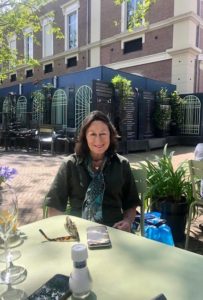
Mr. Livia E.M.P. Jakobs
Frreelance juriste / onderzoeker
Universiteit Leiden, Rechtenstudie, Criminalistiek Cum Laude
Universiteit Leuven, Belgie, Post Academisch Onderwijs, Multidisciplinair Forensisch Onderzoek.
Forensisch en juridisch praktijkonderzoek ten behoeve van inzicht in de Criminalistiek.
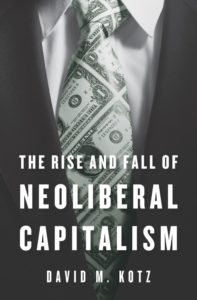 The coronavirus pandemic has created both a public health and an economic crisis in the United States. More than 300,000 people have died of COVID-19, with excess deaths highest among Black and Latinx populations. Hospitals across the country have passed the breaking point. And millions are struggling to eat and pay the rent. Yet, the stock market is hitting record highs and the super-rich are getting even richer in the midst of the pandemic. Yet, there is no talk among the elites of meaningful reforms, even while the climate change is driving the planet to tipping points.
The coronavirus pandemic has created both a public health and an economic crisis in the United States. More than 300,000 people have died of COVID-19, with excess deaths highest among Black and Latinx populations. Hospitals across the country have passed the breaking point. And millions are struggling to eat and pay the rent. Yet, the stock market is hitting record highs and the super-rich are getting even richer in the midst of the pandemic. Yet, there is no talk among the elites of meaningful reforms, even while the climate change is driving the planet to tipping points.



